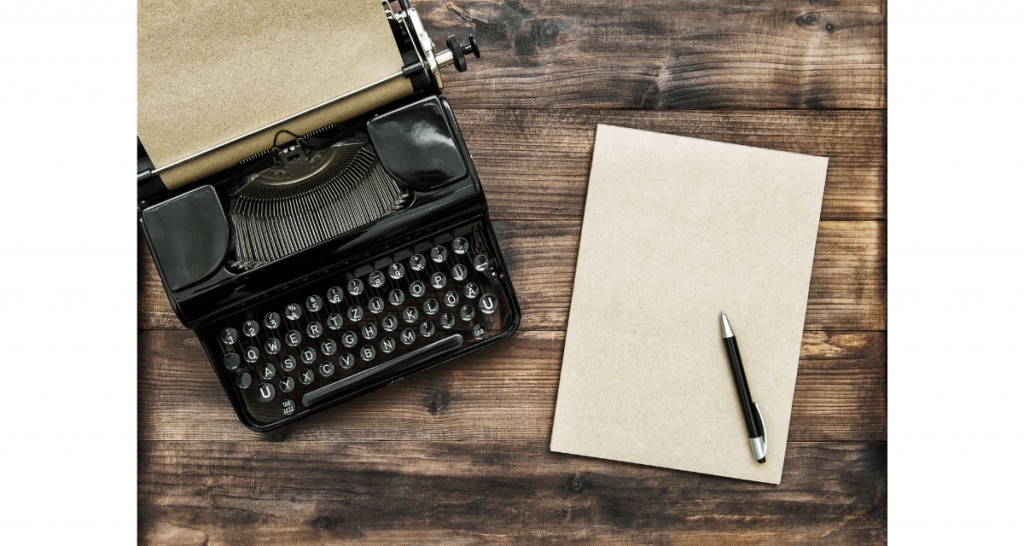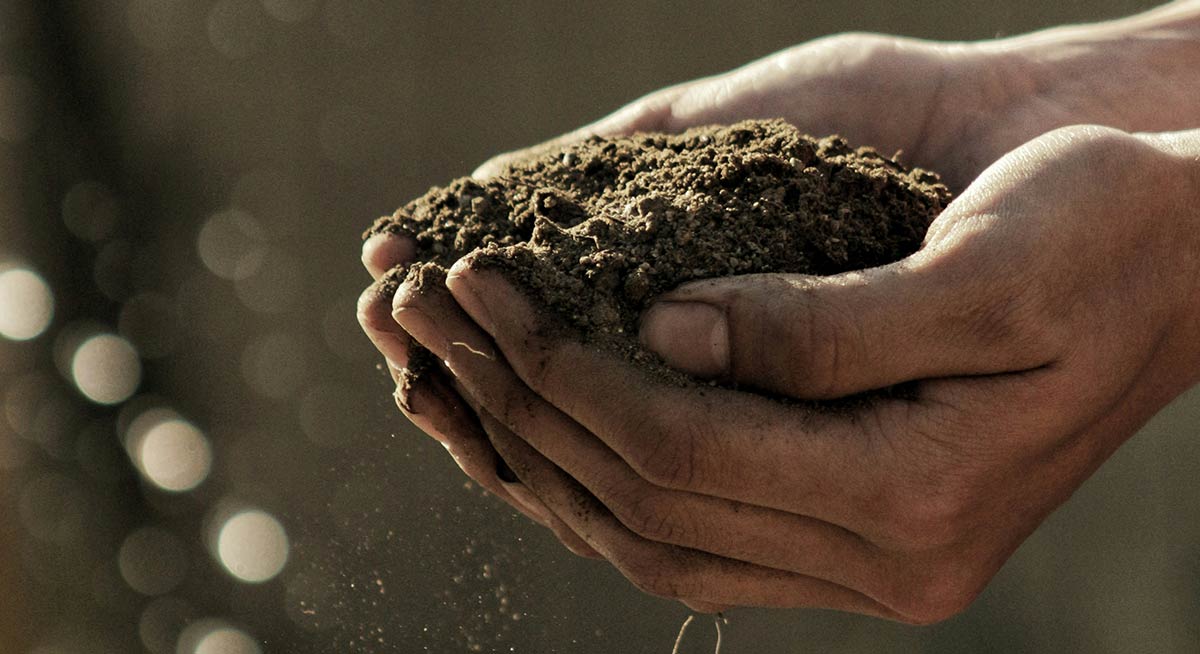Lifestyle
The Best Habits for New Novelists
Published
5 years agoon

There has always been one thing standing in the way of every person that wants to be a novelist: writing the damn novel. Any aspiring writer will tell you that they have endless false starts and half written novels clogging up their laptop. Scribbled notes in copybooks, ideas in their head they haven’t mustered the spirit to put on paper – often times the hardest part about being a writer is the writing. Writers can develop a complex after so many failed attempts. They start to think that they just don’t have what it takes. In reality, they just haven’t given themselves the best chance to succeed. Here are the best habits for all those chasing the two most elusive words in the English language: ‘The End.’

1. Write
Writing every day is a discipline that many people don’t have. It can be difficult to find the inspiration to get behind a keyboard. When you do bring yourself to write, you can struggle with finding a rhythm. Your sentence structure is clunky. You find yourself rewriting the same sentence over and over again. The best way to rid yourself of this is by writing every day. Even if you can only manage to write 100 words one day, make the time to do it.
2. Establish a Ritual
To help strengthen your writing habits, it’s a good idea to create a ritual out of it. Choose to write just after breakfast. Get a coffee mug that you only use when you’re working on the novel. Put on a certain music playlist (something without lyrics, preferably). Where do you write? Pick a place, free of distraction to designate your place to get work done. It can be difficult to write in the room where you typically watch TV or eat. Consider a local coffee shop, a place where you will be free of the million other little things you should be doing around the house.
3. Outline Your Novel
Outlining is tricky. Some writers love outlines. Some writers hate them. All writers need them. You don’t need an outline when you first start writing, but once you know where you you’re your story to go, put it down on paper. There are many different ways to outline your story. It is just a matter of finding the best way for you. A great practice is to break up your novel into acts. This way you can outline your story in sections. Mark the beginning of your story on the outline, then mark the end. If your story was a TV show with three seasons, what would happen in the first season finale? Make that the end point of your first act. Create as detailed an outline of your first act as you feel comfortable. Then, revisit the second and third act of your outline once you’ve written all of the first. Keep in mind that just because you put something in the outline, doesn’t mean it’s written in stone. Nearly all novels have diverted from the original outline in one way or another.

4. Get to Know Your Characters
If you’re writing something, then you presumably want someone to read it. You want your readers to be invested and care – you want them to love or hate your characters. Take the time to develop your characters before you write them into your story. You know that your protagonist is the charming, sarcastic anti-hero type. Why is he that way? Where did he grow up? What was his dad like? Has he ever loved before? Picture him going to the grocery store. What would he buy? How would he treat the cashier? If he found a wallet on the ground, would he keep it or turn it in? Maybe he pockets the cash and then turns it in.
4 ½. Smell Your Setting
One of the easiest ways to get taken out of your story is when suddenly a new element to the setting was introduced that they were not expecting.
It’s snowing? I pictured a warm summer day.
Whenever you introduce a new setting in your story, think of what it might smell like and work from there. Smell is the sense tied closest to memory, but also the last sense in mind when reading a book on the couch. A well described smell can teleport a reader from their bedroom to a dank, marshy swamp or an old rusty spaceship in an instant.
5. Don’t Edit
Writing and editing are two completely different things. They require a different mindset. Do not edit when you should be writing. It can be tempting to go back and tidy up some dialogue that you wrote the day before, but you should avoid it as best you can. The quickest way to disrupt your flow and your vision is to go back and chop up what you worked on mid project. Keep your head down and forge ahead. There will be moments where you don’t feel that your writing is at its best, but it is more important to get the words down than it is to get them down perfectly. There will be time for that later.
6. Cut to the Chase
If you’re not interested in writing about something, how can you expect your audience to be interested in reading about it? There will be times when you find that you’re writing a scene that in all reality is inconsequential to the story and whatever point you’re trying to make. Feel free to leave it all out of there. Is your protagonist having some profound thought on their drive home from work? Did they witness something on the road or learn something significant from a radio broadcast? If not, you should consider leaving it out. There are times when you get into a rhythm and you’re practically typing faster than you can think of the words. Take a beat, step back, and think about the importance of what you’re writing.

7. You’re Done! Now You Can Edit Your Novel
You did it! You sat down every day and banged on the keys until you finally wrote ‘happily ever after,’ or ‘they were never heard from again.’ Of course, that’s not it. While the hard part may be over, you still have a long road ahead. It’s time to rip your story apart. How do you write a good story? You write a bad story and make it better.
When you start to make edits to your story, the first thing you want to do is put it down. Close the laptop and leave it alone for a little while. A few weeks? Months? That’s up to you, but the important thing is to put some space between you and your baby. You want to be able to look over your work with fresh and relatively new eyes. Once you’re ready to bust out the red pen, consider printing out your story – one sided and double spaced. You’ll feel accomplished holding the draft in your hands, but it’s also good to read it like someone would read a book. Try reading your story aloud. It’s easier to skip over misspellings or miss awkward sounding sentences when you read in your head. Don’t be afraid to run out of ink in that red pen. If you don’t have enough notes, you’re not a good editor. Once you’ve made your notes, go back and fix them. Print out the draft, and edit again.
You may like
Business
Top Marketing Podcasts for 2025 You Should Be Following Today
Published
3 weeks agoon
October 17, 2025By
Skylar Lee
Being a marketer means constantly being on the lookout for the latest in marketing trends and news. You’ll be surprised how fast trends come and go, along with the tools that you commonly use for your campaigns. If you’re looking for a trend that never goes out of style, it’s podcasting. Here are the top marketing podcasts to tune in to in 2025:
1. Marketing School

Marketing School is hosted by one of the famous names in the marketing industry: Neil Patel. Eric Siu is also another popular figure hosting the show. They update listeners on the newest marketing and SEO trends and information. Plus, they interview content creators and marketers to share their marketing secrets and tips to achieve their goals. It’s a great starter podcast for new marketers in the field. Listen to the famous hosts every day!
2. Social Media Marketing Podcast

The Social Media Marketing Podcast should be your go-to podcast if you’re focused on social media marketing. Listen to Michael Stelzner weekly to get the best tips on marketing on social media with the latest tech and trends. If you’re also running out of content ideas, the podcast host also provides tips and insights to help you get started on new strategies. Plus, he interviews marketers and business leaders on how they achieved success with social media marketing.
3. The WARC Podcast

The WARC Podcast delivers marketing insights to help you know the latest in marketing for the week. You’ll learn what marketing challenges marketers overcame. Listen to them twice a week for recent trends, interviews, and event recaps.
4. Duct Tape Marketing

Another big name in the marketing sphere is Duct Tape Marketing, which made an impact in 2005. Listen to John Janstch three times a week to listen to interviews with small business owners and marketers, and how they grew their businesses through marketing strategies. Don’t miss out on the trends and tips to supercharge your marketing.
5. Perpetual Traffic

If you want tips from expert marketers Ralph Burns and Kasim Aslam, listen to Perpetual Traffic! They specialize in paid traffic tips to help you increase sales and leads! Expect interviews from various experts in different niches. You can also get insights from case studies to help you grow your business. Listen to them twice a week!
6. The Digital Marketing Podcast

Do you want to be updated on everything digital marketing? The Digital Marketing Podcast is the best podcast to listen to. Know the latest news, updates, stats, and future of marketing. The hosts also discuss current tech trends in marketing to grow your business. Listen to the hosts twice a week!
7. The Affiliate Guy

Are you an affiliate marketer and need expert advice and the latest updates on affiliate marketing? You should listen to The Affiliate Guy. Hosted by Matt McWilliams, he has trained over 320,000 affiliates.
Think of The Affiliate Guy’s podcasts as engaging audio versions of How-To blogs. Additionally, he interviews entrepreneurs and leaders. Plus, he also references case studies to help you understand how they achieved their goals.
8. Marketing Trends

The very apt Marketing Trends podcast updates you weekly with new information and insights about marketing! You can listen to CEOs, CMOs, and other thought leaders share best practices and strategies to grow the biggest brands! Know how you can grow as a leader or an ambitious marketer when you get the latest tips for achieving success.
9. Stand The F*ck Out™

Are you tired of hearing or reading the same marketing tip or trend and don’t want to use that strategy anymore? Stand The F*ck Out™ gets straight to the point and doesn’t dilly dally when discussing marketing. Louis Grenier hosts the show and provides evergreen topics. You also get to hear from experienced marketers how their teams executed strategies and got the desired results. Listen to this podcast weekly.
10. Social Pros Podcast

Are you interested in learning how social media marketers execute their campaigns for big brands? The Social Pros Podcast should be on your radar. Jay and Adam host the show, which you can listen to weekly. Not only do they discuss recent trends and strategies, but they also discuss team management and other personal conversations on being a marketer.
11. Marketing Over Coffee

Do you prefer listening to podcasts in the morning during breakfast? Why not listen to Marketing Over Coffee on the side while enjoying a hearty morning meal? Like other podcasts, you’ll hear the latest tech trends like AI and improved marketing tools. Plus, get insights from the experts like Seth Godin, Rand Fishkin, and Ann Handley! Episodes come out weekly!
Lifestyle
What the Hell Was Magic Dirt? The Black Oxygen Organics Hoax
Published
2 months agoon
September 11, 2025
It has been years since we experienced the bizarre that was the pandemic, and yet, shady schemes still abound in the form of MLM (multilevel marketing) related to it. If you’ve ever heard or seen Magic Dirt, you’re not alone in wondering what it is all about.
While we’re now in the era of AI breakthroughs, space tourism, and wearable brain tech, some people still seem to be stuck in the horrid past. Sellers are peddling literal dirt as a miracle health product. Promoted mainly by anti-vax influencers and conspiracy circles, this dirt they call “wellness solution” was sold with pseudoscience, fear tactics, and a generous dose of misinformation.
And yes, it was an MLM. Because of course it was.
Here’s the breakdown of the Magic Dirt controversy—just one of many reasons why multi-level marketing schemes continue to be a red flag for anyone with a functioning sense of skepticism.
Planting The Seeds
It all began in May of 2021 when we were finally getting into the rhythm of our “new normal.” Of course, health was a significant topic of discussion in the media. It’s no surprise that many alternative medicines are gaining popularity on social media. It was during this month that a peculiar brand emerged on the scene. Depictions began circulating with smiling women slathering black mud on their faces, drinking jars of black liquid, and placing their babies’ feet in a tub of black water.
In the captions, they listed the numerous benefits of using this new “magic dirt.” And of course, the benefits varied from person to person. You might read one post that credits the dirt with curing her child’s low energy and constipation. Then you might scroll on to read another post claiming that it rejuvenates the skin while calming anxiety.
One thing these posts had in common was that they contained the hashtag #BOO while providing a shoutout to the company Black Oxygen Organics.
So, what does Black Oxgen Organics have to say about their “magic dirt”? As a brand, they described their product as,
“the end product and smallest particle of the decomposition of ancient, organic matter.”
Yeah, it’s purposely vague. In short, Magic Dirt is supposed to be a form of fulvic acid. This is a compound derived from the decayed plants of an Ontario peat bog. Sounds super rejuvenating, right?
To be fair, fulvic acid is shown to help with allergies and gastrointestinal function. But as with your average MLM, Black Magic Organics has exaggerated these benefits to the tenth power. They’ve taken these benefits and used them to sell 4.5 ounces of literal dirt, sealed in a fancy black bag and stamped with a $110 price tag. And if that didn’t feel like a slap in the face already, this stuff didn’t even come with free shipping!
Magic Dirt is claimed to be safe for anyone of any age. This includes your children and your pets. It’s been said to help heart health, brain function, and pretty much every common health problem in the world.
Of course, with it being 2021 and all, it started getting sent around to anti-vax and COVID-sceptical groups. Instead of seeking treatment for a deadly virus, people were mixing mud into their smoothies and calling it a day.
The Immediate Downfall
As Instagrammers and TikTokers promoted this “cure-all” product, an alarming number of women were eager to become direct sellers. For many, this company was their first introduction to the notorious Multi-Level-Marketing schemes.
That is, until the professionals got involved. You see, Magic Dirt was not at all FDA approved. And when health regulators from the U.S. and Canada became aware of its popularity, they conducted an investigation. They called for multiple product holds at the border, which in turn gave rise to an army of online skeptics.
And in typical MLM fashion, Black Oxygen Organics took their money and ran for the hills. Only about six months after its initial success, the company announced that it was officially shutting down. This sparked a significant backlash from online sellers. They grieved the end of miracle supplements, while also petitioning to recover the thousands they had invested in direct selling.
Unfortunately, most victims of these schemes will likely never recover their money.
The fact of the matter is that Black Oxygen Organics and similar companies are based on a scam. Period. That’s what everyone needs to remember, so they can avoid making the same mistakes as so many others. Always be vigilant for predatory companies.
Lifestyle
These Anti-MLM Communities Are Saving People from Scams
Published
3 months agoon
July 31, 2025
Have you ever stumbled upon an MLM online community? If your answer is no, you’re lucky. But if you did, you’d know that they can be a breeding ground for toxicity. Fortunately for some, a new wave of anti-MLM communities has emerged and is giving the much-needed breath of fresh air.
These communities include people who use their platforms to warn us about these dangerous schemes. They also provide a support system for those who are still enmeshed in it and trying to find a way out.
If you’re one of the unlucky ones trying to escape or are just curious, check out these four anti-MLM communities that are saving people from scams.
r/antiMLM

I just love Reddit. It provides a window into just about any subculture, no matter how obscure, and connects you with like-minded people from around the globe. It’s honestly the easiest place to find communities with shared interests.
r/antiMLM is just one of the many communities Reddit has to offer. People will post discussions, pictures, and screenshots showcasing the horror of MLMs. The content ranges from lighthearted and funny, to downright sad. Either way, everyone here has the same idea: MLMs are harmful and predatory. Should anyone come across this subreddit, they’ll be way less likely to fall for a pyramid scheme. And by subscribing to said subreddit, they are nearly eliminating all possibilities of going anywhere near an MLM. Subscribers of r/antiMLM are familiar with popular MLM companies, their tactics, and the red flags within the direct marketing industry. They are quicker to identify this type of scam.
The Anti-MLM Coalition

This website is an absolute GODSEND. The Anti-MLM Coalition is an incredible organization filled with educational materials and various resources. You can tell from the homepage alone that they mean business.
The menu bar provides 8 main website pages. The “Homepage “is filled with their latest articles and a search bar to navigate. “MLM Master List” is exactly what it sounds like: a list of all the known MLM companies in existence. The “MLM or Not?” page brings users to a long article detailing how to spot your typical pyramid scheme.
“Get Help” is a page filled with helpful information. It’s for people who have a loved one trapped in an MLM, or people who wanna take action against these companies. Each link leads to a detailed article on the subject.
The “Resources” page is a shoutout to various authors, YouTubers, and documentaries. It helps anyone who’s trying to do further research. They have a page dedicated to a very shareable infographic; a great tactic to spread the word around fast.
The “Activism” page provides a guideline on where and how to take action. They recommend printing cards, reporting, and exposing MLM corporations on social media. The more buzz, the better.
And of course, they have a “Contact” page in case you need to get in touch.
MLM Lies Exposed

Looking for more places to discuss your anti-MLM sentiments? Or just looking for general help without the hassle? Well, here’s the biggest anti-MLM Facebook group. MLM Lies Exposed is an invite-only community with over 30,000 members. It’s a lot like r/antiMLM, in that you can post things involving the false promises and skeevy behavior behind MLMs. I’d recommend this page to anyone who’s more familiar with Facebook or finds it easier to navigate than Reddit.
Anti- MLM Youtube

Now, hear me out. This is not an official community, but if you’re a regular on YouTube, you’ll know that there are different genres of videos. And each of these genres has garnered its own distinct communities.
They’re kinda like cliques. You’ve got gamer bro YouTubers at one table, and you’ve got beauty influencers at another table. You’ve got commentary YouTubers sitting somewhere near the true crime YouTubers and the podcast channels. Somewhere in the corner, you’ve got the anti-MLM spaces. These YouTubers dedicate their channels to spreading awareness about MLMs and other shady corporate behavior.
Popular YouTube channels include Hannah Alonzo, iilluminaughtii, NOT THE GOOD GIRL, and Kiki Chanel
MLM companies often pretend to be a revolutionary force changing the world and their own lives. In truth, they’re just making their distributors continue a cycle of unhappiness and financial ruin. These are the communities that help people who’ve been duped by these false hopes to move on with their lives.

What’s the Best Graphic Design Service for Tech Companies?

What’s the Best Graphic Design Service for Healthcare Brands?

Top 10 Free and Paid Employee Communication Tools

10 Best Photo Editing Apps for Personal and Business Use in 2026

What’s the Best Graphic Design Service for Social Media Campaign?

What’s the Best Merchandise Design Company?

Top 10 Tablets to Use in 2025

Top 10 Tablets to Use in 2025

Top 10 Free and Paid Employee Communication Tools

10 Best Photo Editing Apps for Personal and Business Use in 2026

What’s the Best Graphic Design Service for Ecommerce Businesses?

What’s the Best Graphic Design Service for Startups

What’s the Best No Limit Creatives Alternatives?

What’s the Best Merchandise Design Company?
Trending
- Business2 days ago
Top 10 Free and Paid Employee Communication Tools
- Technology2 days ago
10 Best Photo Editing Apps for Personal and Business Use in 2026
- Business4 days ago
What’s the Best Graphic Design Service for Social Media Campaign?
- Business2 days ago
What’s the Best Graphic Design Service for Healthcare Brands?
- Business2 days ago
What’s the Best Graphic Design Service for Tech Companies?





